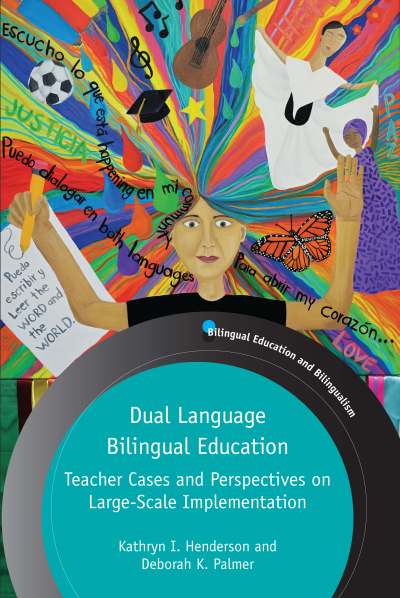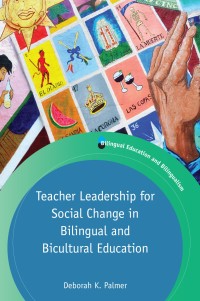Dual Language Bilingual Education Implementation in Unprecedented Times: Issues of Equity Amidst the Coronavirus Pandemic by Kathryn I. Henderson
The focus of this piece by Kathryn I. Henderson on Dr. Deborah Palmer's work is timely considering the COVID online moment that we are in.
Here is the page to Spanish-language resources for our families that we work with in East Austin. Thanks, Dr. Palmer for getting out your urgent request for equity for dual language/bilingual education students in our schools.
-Angela Valenzuela
 Weeks ago when we agreed to write this blog post, we knew we wanted to connect the core messages of our book about teachers implementing dual language bilingual education (DLBE), to current issues of equity and the role of the educator at their heart. In our book, we describe the shift of DLBE implementation in the United States from small-scale, often grass-roots efforts to large-scale, including state-led and district-led, initiatives as ‘unprecedented.’ We had no idea that the COVID-19 pandemic was going to take DLBE – and public education in general – into an entirely new and unprecedented time. Under the circumstances, it seems impossible for us to discuss anything but the new and very rapidly unrolling reality of shifting DLBE curriculum and instruction online on a massive scale, and the role of teachers in navigating this uncharted terrain. We will share three potential issues of equity in DLBE implementation that we believe are more important than ever in this new and shifting online terrain: a) ensuring access, b) centering marginalized students, and c) engaging a critically conscious curriculum.
Weeks ago when we agreed to write this blog post, we knew we wanted to connect the core messages of our book about teachers implementing dual language bilingual education (DLBE), to current issues of equity and the role of the educator at their heart. In our book, we describe the shift of DLBE implementation in the United States from small-scale, often grass-roots efforts to large-scale, including state-led and district-led, initiatives as ‘unprecedented.’ We had no idea that the COVID-19 pandemic was going to take DLBE – and public education in general – into an entirely new and unprecedented time. Under the circumstances, it seems impossible for us to discuss anything but the new and very rapidly unrolling reality of shifting DLBE curriculum and instruction online on a massive scale, and the role of teachers in navigating this uncharted terrain. We will share three potential issues of equity in DLBE implementation that we believe are more important than ever in this new and shifting online terrain: a) ensuring access, b) centering marginalized students, and c) engaging a critically conscious curriculum.
 If you found this interesting, you might also like Teacher Leadership for Social Change in Bilingual and Bicultural Education by Deborah K. Palmer.
If you found this interesting, you might also like Teacher Leadership for Social Change in Bilingual and Bicultural Education by Deborah K. Palmer.
Dual Language Bilingual Education Implementation in Unprecedented Times: Issues of Equity Amidst the Coronavirus Pandemic
This month we published Dual Language Bilingual Education by Kathryn I. Henderson and Deborah K. Palmer. In this post the authors discuss the effects that the COVID-19 pandemic is having on dual language bilingual education.
 Weeks ago when we agreed to write this blog post, we knew we wanted to connect the core messages of our book about teachers implementing dual language bilingual education (DLBE), to current issues of equity and the role of the educator at their heart. In our book, we describe the shift of DLBE implementation in the United States from small-scale, often grass-roots efforts to large-scale, including state-led and district-led, initiatives as ‘unprecedented.’ We had no idea that the COVID-19 pandemic was going to take DLBE – and public education in general – into an entirely new and unprecedented time. Under the circumstances, it seems impossible for us to discuss anything but the new and very rapidly unrolling reality of shifting DLBE curriculum and instruction online on a massive scale, and the role of teachers in navigating this uncharted terrain. We will share three potential issues of equity in DLBE implementation that we believe are more important than ever in this new and shifting online terrain: a) ensuring access, b) centering marginalized students, and c) engaging a critically conscious curriculum.
Weeks ago when we agreed to write this blog post, we knew we wanted to connect the core messages of our book about teachers implementing dual language bilingual education (DLBE), to current issues of equity and the role of the educator at their heart. In our book, we describe the shift of DLBE implementation in the United States from small-scale, often grass-roots efforts to large-scale, including state-led and district-led, initiatives as ‘unprecedented.’ We had no idea that the COVID-19 pandemic was going to take DLBE – and public education in general – into an entirely new and unprecedented time. Under the circumstances, it seems impossible for us to discuss anything but the new and very rapidly unrolling reality of shifting DLBE curriculum and instruction online on a massive scale, and the role of teachers in navigating this uncharted terrain. We will share three potential issues of equity in DLBE implementation that we believe are more important than ever in this new and shifting online terrain: a) ensuring access, b) centering marginalized students, and c) engaging a critically conscious curriculum.Ensuring Access
Access to DLBE, including access to both programs themselves and to the curriculum in them, is always a central equity issue. The shift to distance learning magnifies this issue. How do we provide equitable education in an online medium under circumstances of extreme disparity of access to reliable internet and technology tools, potentially through languages not understood by adults in households? The educator is at the heart of this issue. Teachers and school leaders around the world are asking themselves as they struggle to reach families: Do all our students have access to reliable internet? What devices will they be working on? How much support will they have? How do we provide equitable access to technologies, resources, and support in all the languages our families require?
Centering Marginalized Students
The rapid increase in DLBE programs across the United States through new large scale initiatives has, in some cases, led to processes in which the linguistically and culturally diverse emerging bilingual students that these programs were designed to serve are no longer the focus. Scholars have dubbed this the ‘gentrification’ or ‘whitening’ of dual language. As educators grapple with transitioning to distance learning, this dynamic is more visible than ever: it is imperative that the choices we make online center our most vulnerable students, in terms of expectations upon students (and their families) for learning to use new tools and engage in new ways, requirements for internet access, and finding multiple ways to communicate with and support families. Educators are on the front lines: because teachers engage with children every day, they may be the first to learn which families have lost income, are not eligible for government assistance, and/or are isolated. They know which families are experiencing illness. Teachers are making sure to have resources at their fingertips so they can get them to families in need.
Arguably, as DLBE teachers in a time of crisis, our time and energy are our most valuable resource right now. Where is your time and energy being spent? Are you finding you are able to focus first on the basic needs and human rights of students who need it the most?
Engaging a Critically Conscious Curriculum
Who are we and who do we want to be? Do our community’s actions reflect generosity, compassion, and community well-being, or are some members of our community mired in selfishness, racism, or individualism? This historical moment brings this question – always present in DLBE schools – sharply into focus. Teachers in DLBE classrooms constantly balance the needs of families with vastly different backgrounds – racially, ethnically, linguistically, and socioeconomically. While all of our students may be experiencing stress, anxiety and a disruption to routines during this pandemic, some of our students’ families are likely struggling with much worse: food insecurity, homelessness, or a lack of healthcare. Addressing students’ and their families’ socioemotional and physical well-being must take precedence; it is unreasonable to expect any child to learn new math or reading skills in any language before these basic needs are met. Meanwhile, this moment has the potential to open up a space for deepening critical consciousness in our diverse classroom communities: the discomfort and vulnerability that even our most privileged families are feeling right now may actually support cross-linguistic, cross-cultural empathy, compassion, and critical listening. Perhaps in this moment of crisis, DLBE families can organize across difference to support one another.
In our book, we focus on teachers. We provide windows into different (actual) classrooms and the complex and multifaceted way teachers adopt, navigate, and implement DLBE in a top-down implementation context. During this crisis, we believe many of our central messages are the same – though they are certainly transformed into a new context and a heightened sense of urgency. Teachers are critical language-in-education policymakers who can engage in transformative pedagogy through centering the needs of culturally and linguistically diverse children and their families and adopting critical consciousness as a central goal. We believe more strongly than ever that this is a time to (re)invest and (re)commit to this transformative potential of DLBE. Hang in there, bi/multilingual maestr@s!
For more information about this book please see our website.
 If you found this interesting, you might also like Teacher Leadership for Social Change in Bilingual and Bicultural Education by Deborah K. Palmer.
If you found this interesting, you might also like Teacher Leadership for Social Change in Bilingual and Bicultural Education by Deborah K. Palmer.
